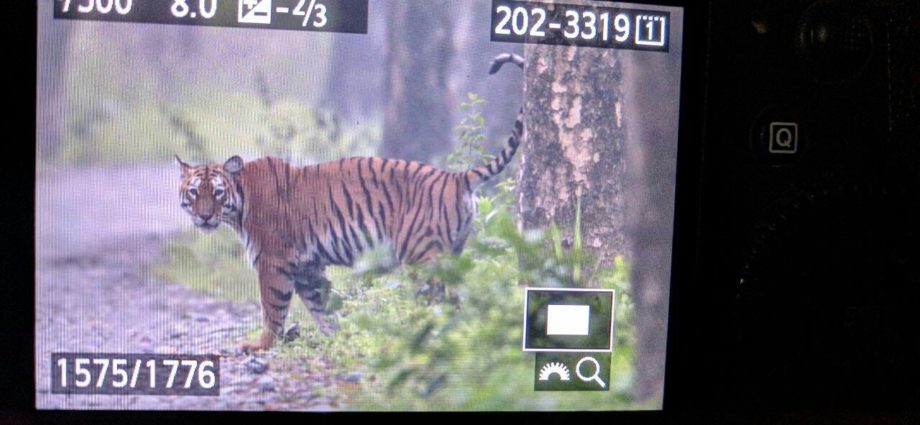The Manas National Park in Assam also has the status of being a Tiger Reserve has proved to be one of the ground breaking stories of conservation of the National Animal of India. Manas Tiger Reserve is a ‘tiger source’ population site in the north-east India and adjoins Royal Bhutan Manas National Park. Manas Tiger Reserve successfully propagated achieved the number of tigers into three fold in the last ten years (2011-2020). The annual camera trap survey has been carried out since 2010 with collaboration with Aaranyak and WWF-India.
The 12th annual camera trap survey was conducted in four survey blocks starting from the 14th December, 2020 and ending on 16th June, 2021 as per methodological guidance of the National Tiger Conservation Authority (NTCA). The camera traps were placed at a total of 285 location. 200 units of higher-end white flash camera traps equipped with both motion and thermal sensors were used in this survey. The survey yielded proof of 30 terrestrial mammalian species. Out of which 16 species are threatened, 12 species are ungulates and tiger’s prey species, 7 species are cats, 2 species are other co-predators. Himalayan Serow (Capricornicus sumatraensis) and Goral (Naemorhedus sp.) were caught on camera for the first time in Manas Tiger Reserve.
Extensive systematic camera trap survey was carried out for the first time in Manas Tiger Reserve covering Manas National Park, the First Addition to Manas National Park and the Barnadi Wildlife Sanctuary – together covering a total area of 876 sq.km approximately. The survey recorded presence of 48 individual tigers in Manas Tiger Reserve of which 38 were adults, 3 sub-adults and 7 cubs. Among adult tigers, 21 were females, 16 males and 1 unidentified sex.
The tiger number in Manas National Park has been on the increasing side since the start of the project. The population now is more than three times from 10 adult tigers in 2010 to 34 adults in 2021. The survey also recorded 37 leopards in Manas Tiger Reserve of which 31 were adult and 6 sub – adults. Among adults, 14 were females and 17 were males
This year’s camera trap survey is proof that the tigers are potentially flourishing in Manas and this significant recovery in numbers has become a global example. Over the time it is seen that there is a potential increase of breeding females and cubs in Manas. This is proof of the location being a healthy breeding ground for tigers, its co-predators and booming the population in coming time. Besides tiger and leopard, the survey also recorded a number of other endangered, vulnerable, near threatened and least concern mammals. Of these, 4 species are endangered, 9 species are vulnerable, 4 species are near threatened and 11 species are least concerned as per IUCN Status. This list includes Asian Elephant, Hog Deer, Hispid Hare, Wild Buffalo, Rhino, Sambar, Swamp deer, Spotted Deer, Barking Deer, Himalayan Black Bear, Clouded leopard, Golden Cat, Bintourong, Himalyan Serow, Marble Cat, Goral, and the Black Panther.
Feature Image Courtesy : Rustom Basumatary

